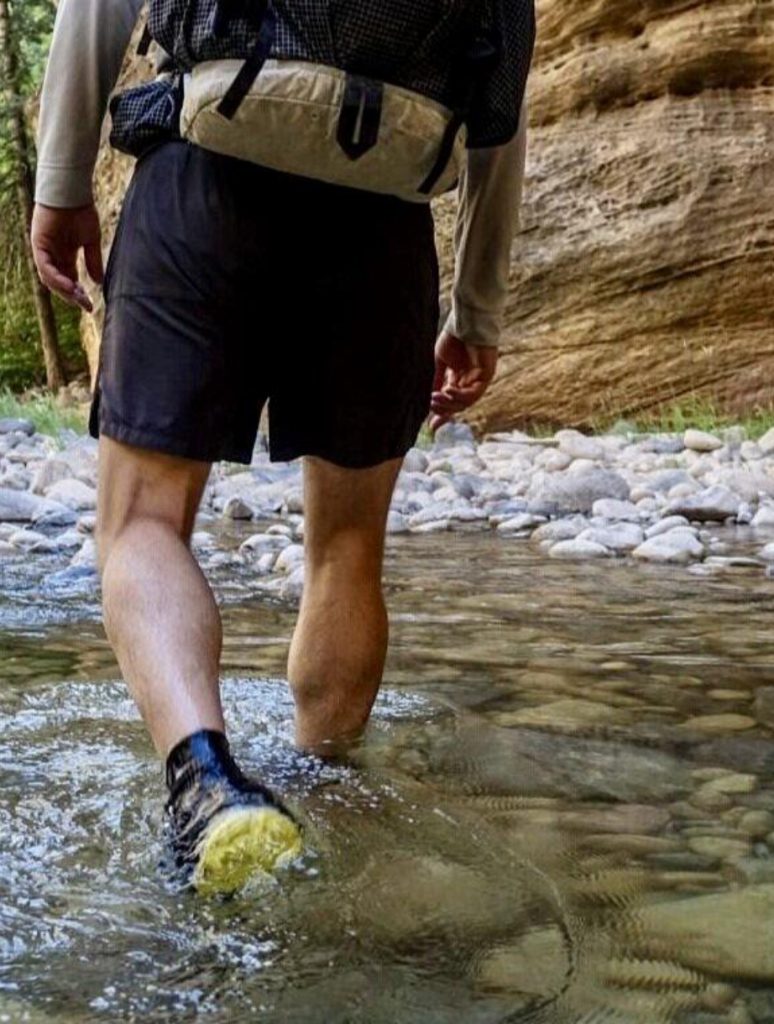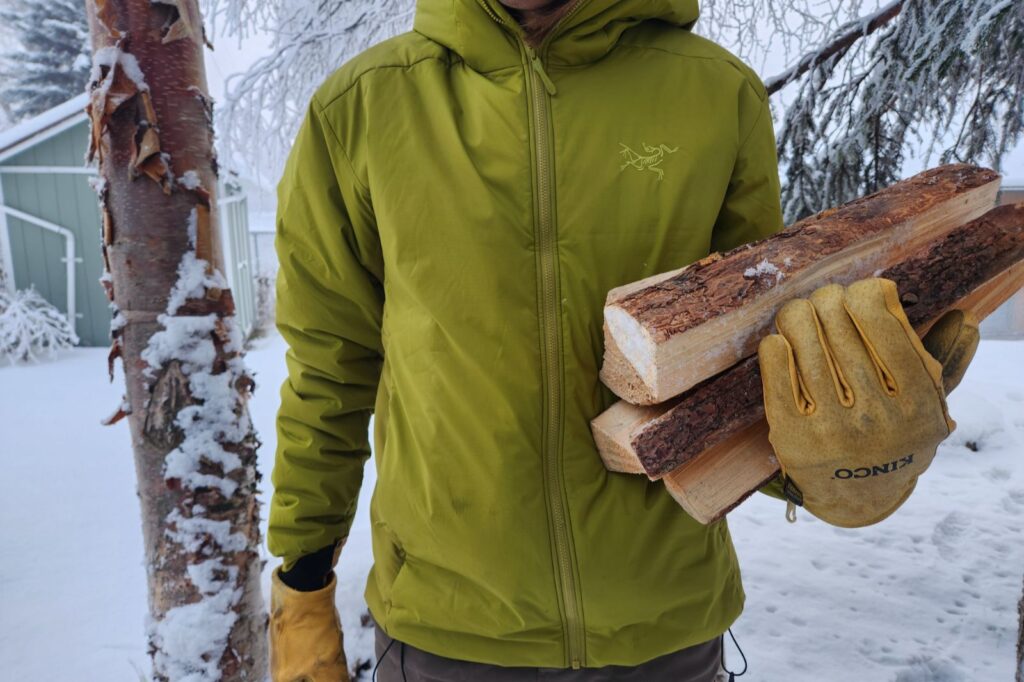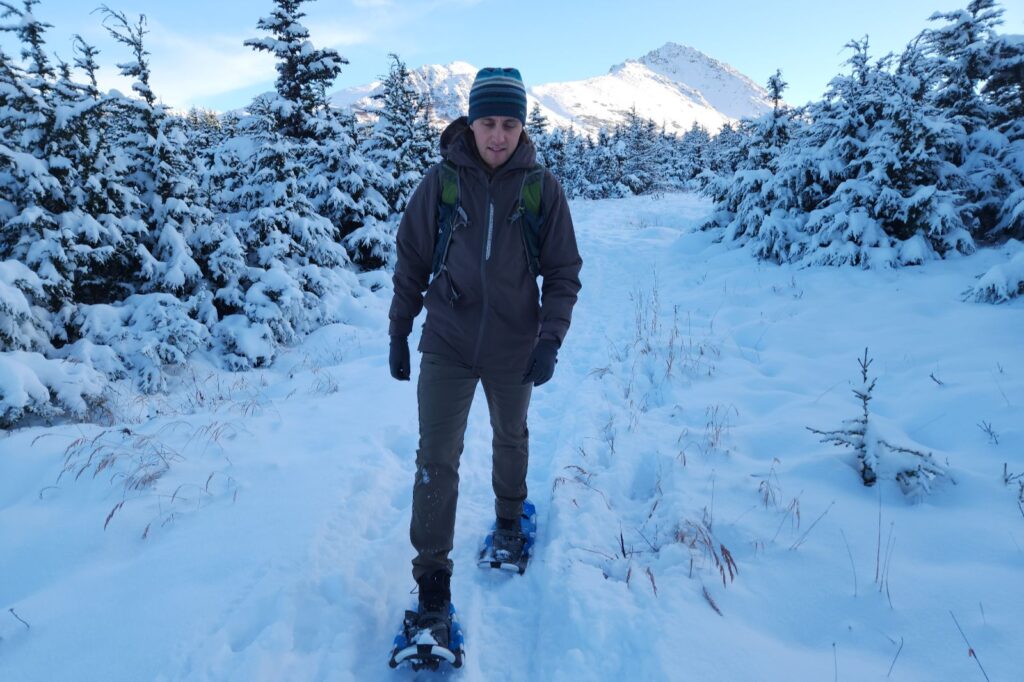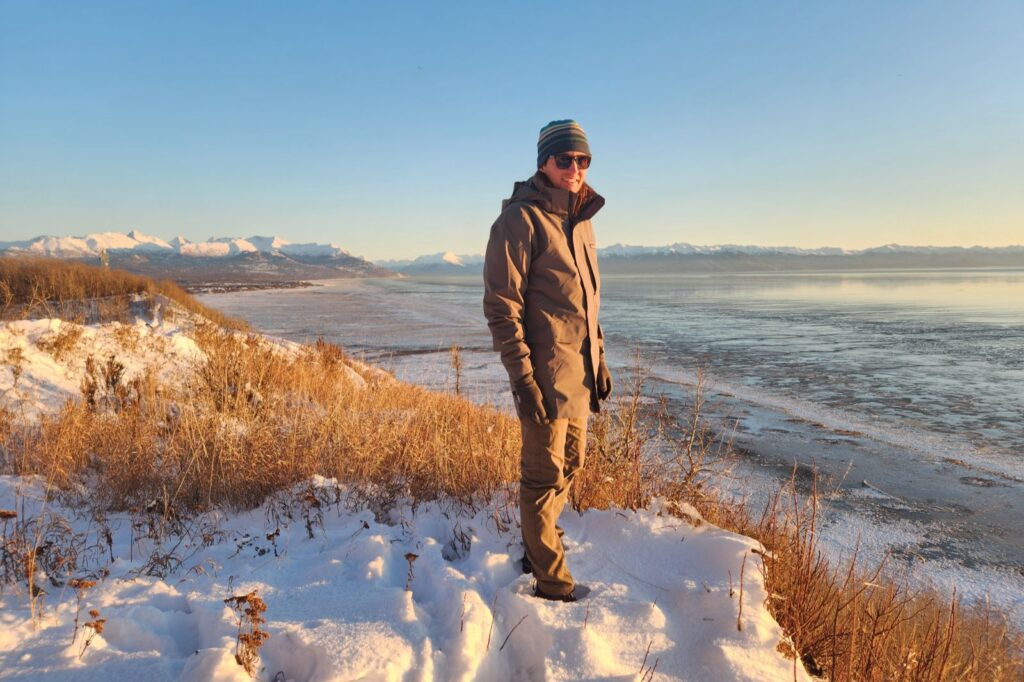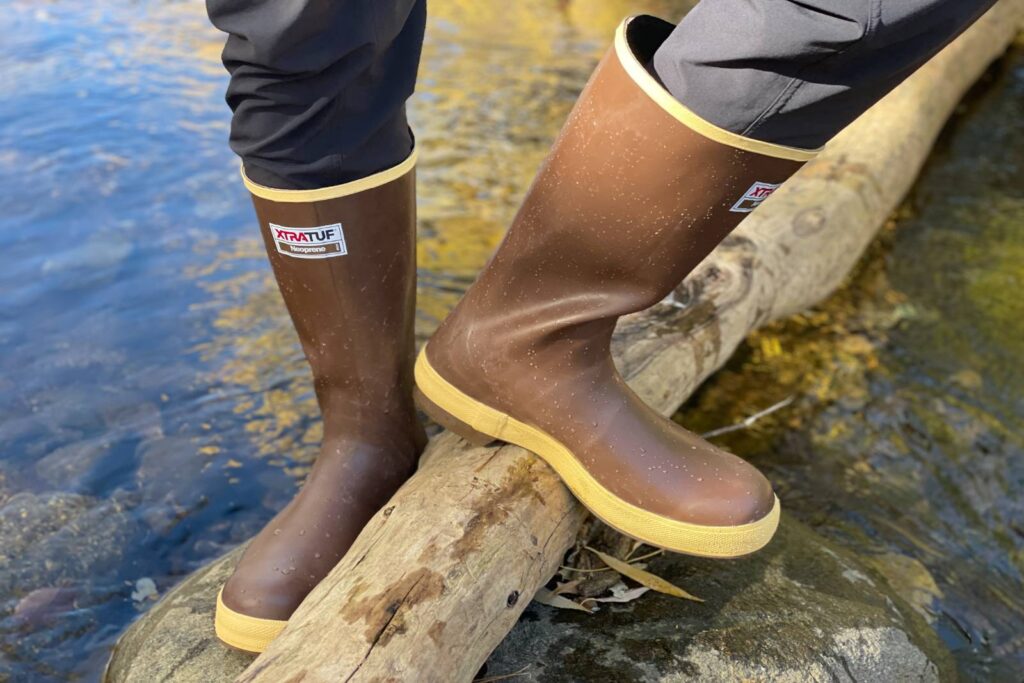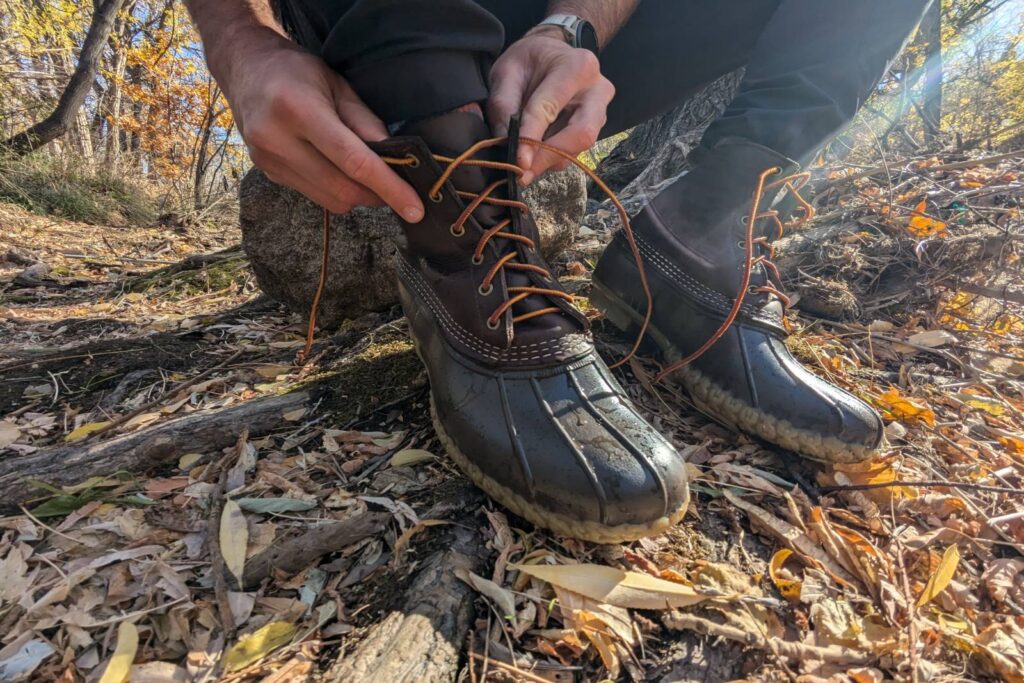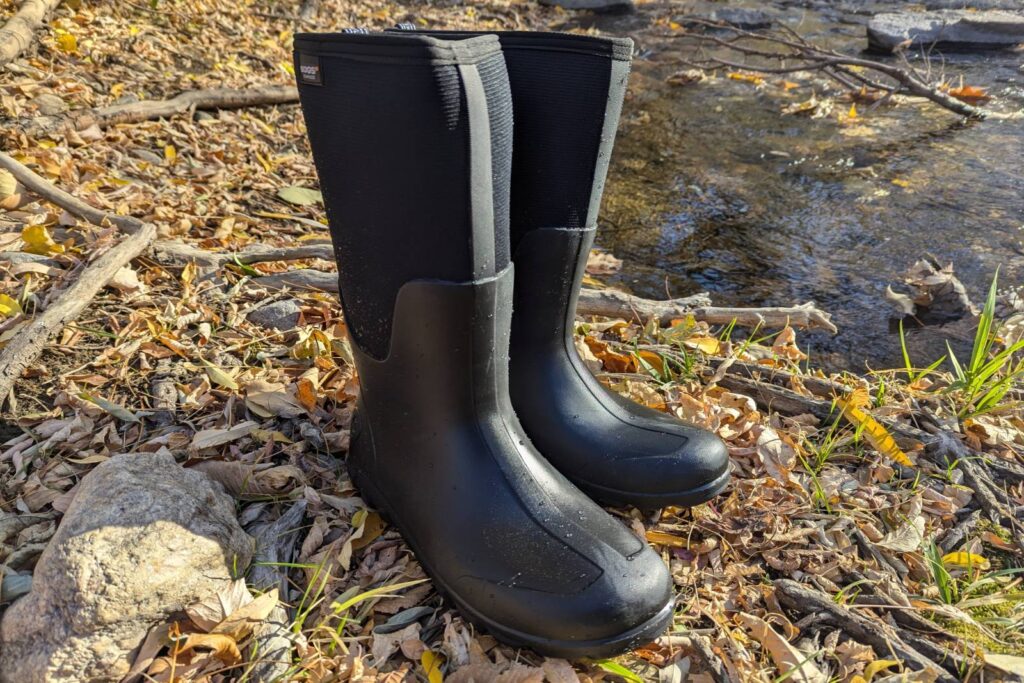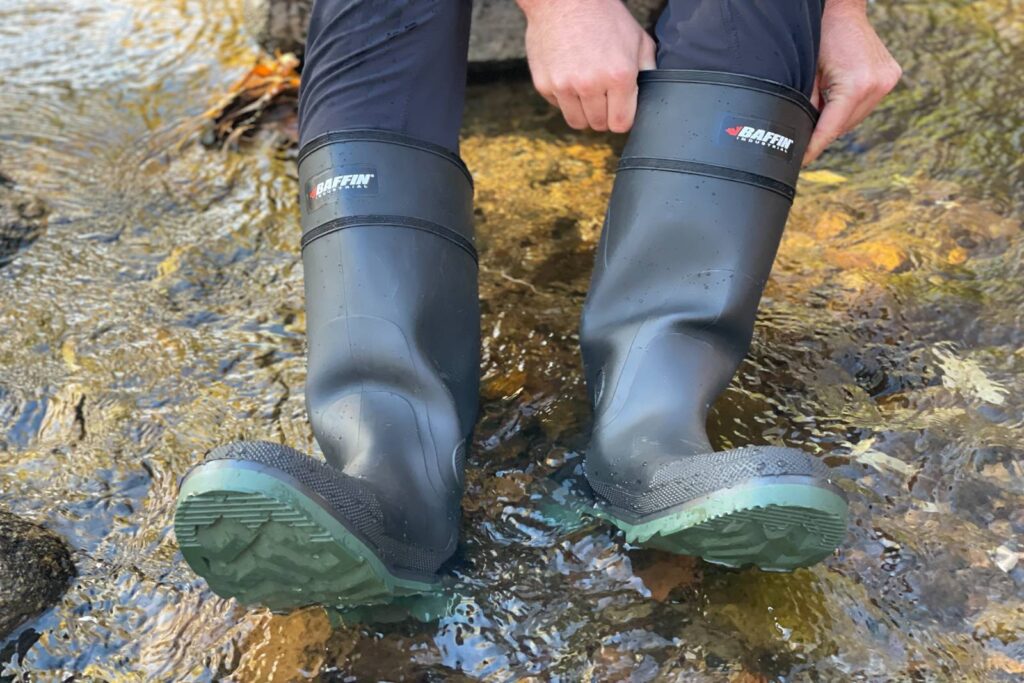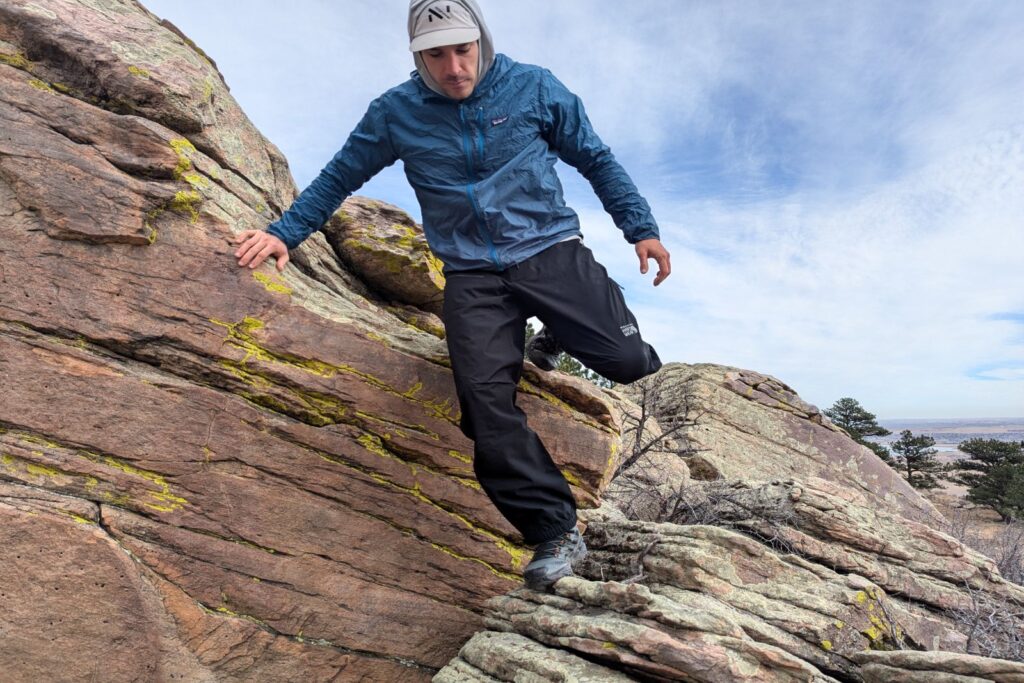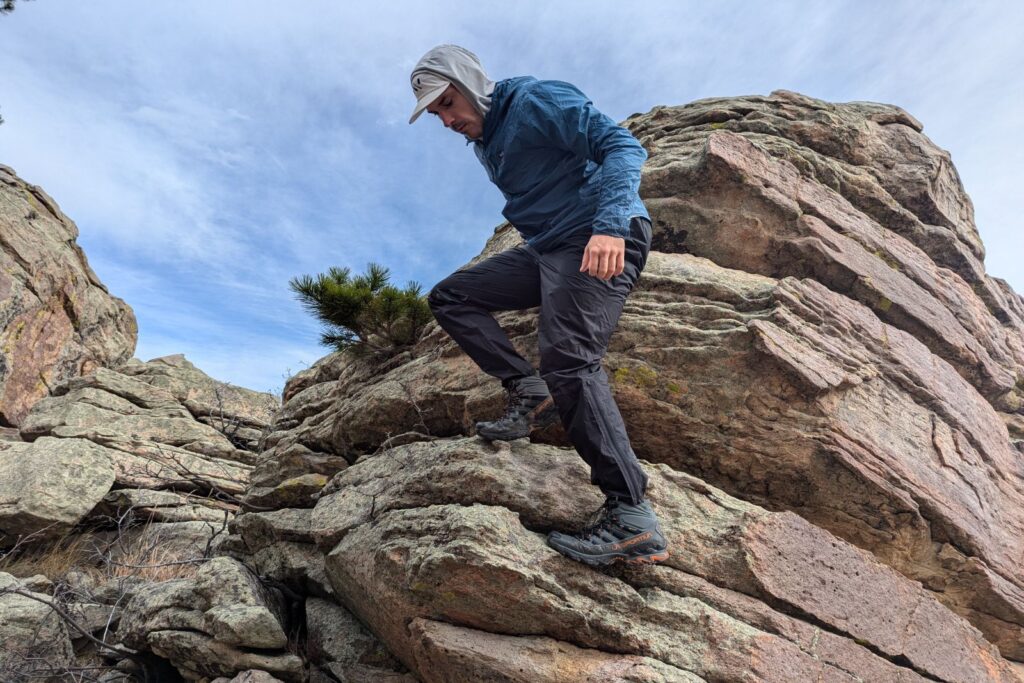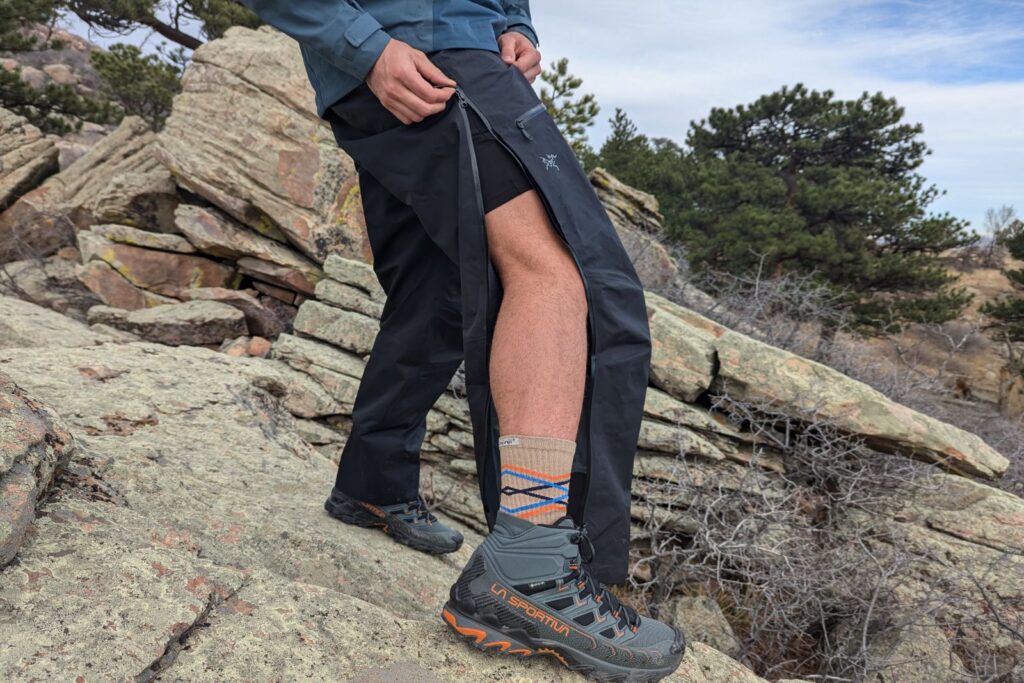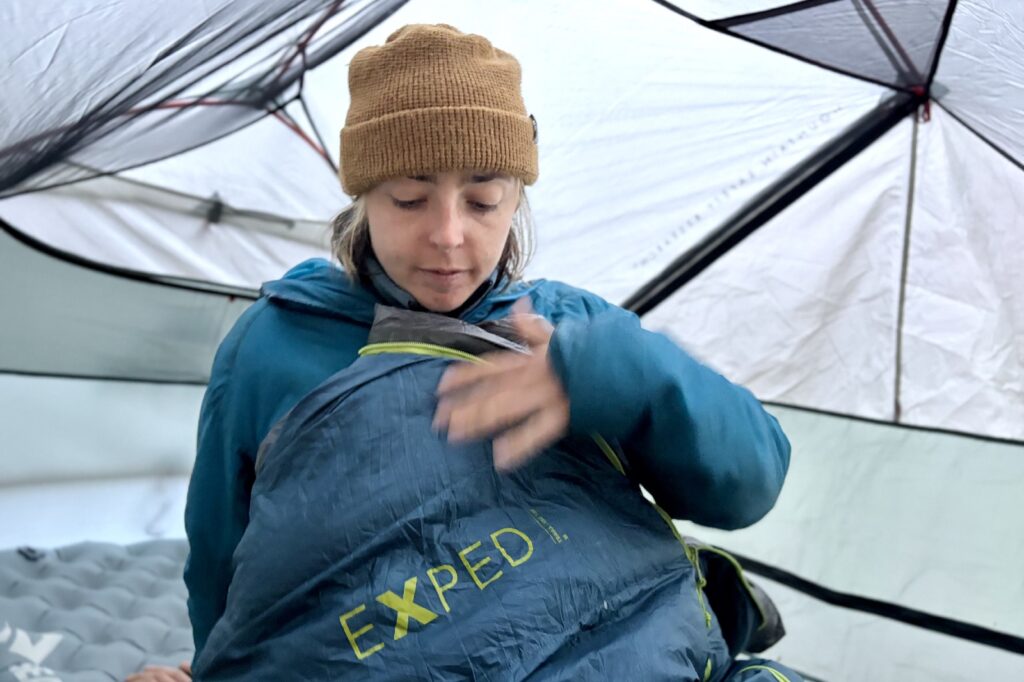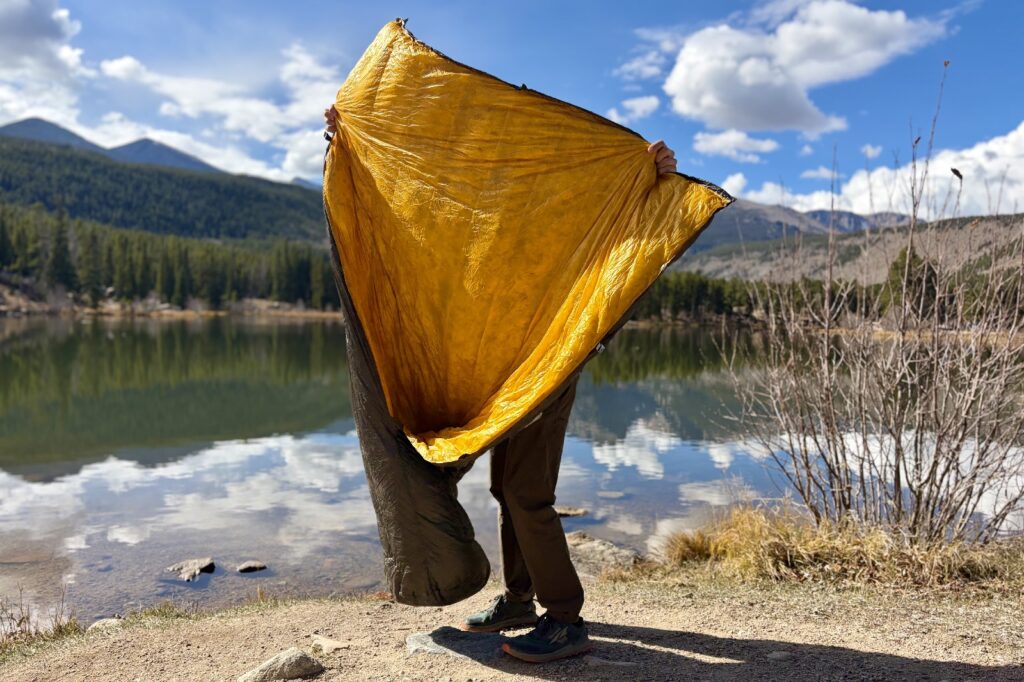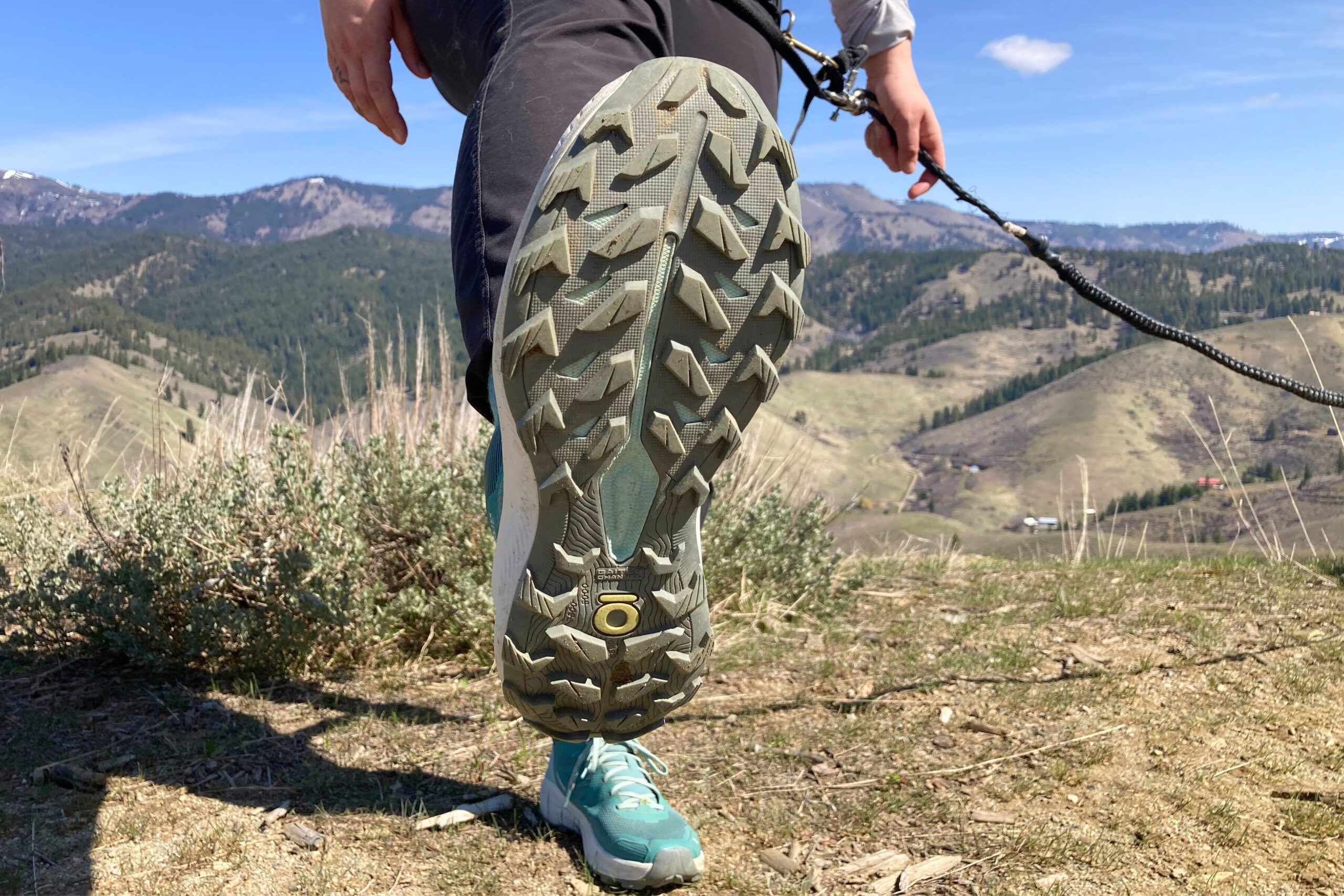
Running Shoes vs. Hiking Boots
“If you want to forget all your other troubles, wear too tight shoes.”~The Houghton Line
We get asked about backpacking footwear all the time, and the question is almost always the same. Hikers want to know if it’s really okay to backpack in running shoes and how light their packs need to be before they can make the switch.
For many of us, it’s been drilled into our heads since day one that backpackers wear boots. That’s just what you do. You need the toughness and the ankle support and the water protection, right?
That’s why it blew our minds over a decade ago when we learned that thru-hikers cover thousands of trail miles every year in running shoes!
When we get asked this question now, after many years and thousands of our own trail miles (both with and without boots), we feel very confident in saying: Ditch the boots and don’t look back.
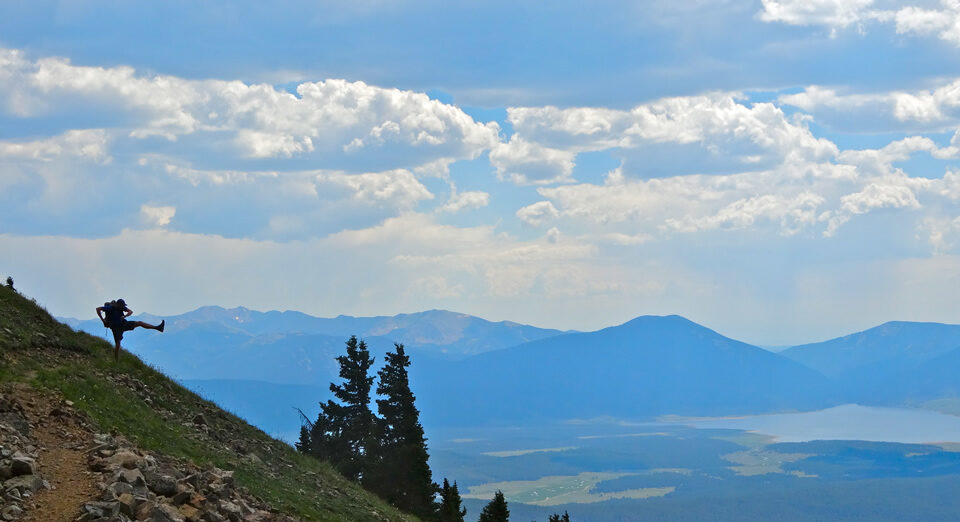
LOOKING FOR A NEW PAIR OF KICKS?
Check out our footwear guides to learn about critical considerations and our favorite recommendations.
1. Weight on Your Feet is Costly
The more weight you carry, the more energy you expend carrying it. That part is simple. But the weight carried on your feet is actually much more significant.
Weight on your feet is metabolically costly. Heavier boots restrict ankle movement and cause higher “swing cost” compared to flexible running shoes, which adds to fatigue. Terrain, stride length, ankle support, and personal conditioning all affect the energy difference, but swapping 3 lb boots for 1 lb hiking shoes will increase your speed and slow fatigue.
2. Blisters are the Pits
Rigid, hard-soled boots don’t flex with your feet, and they won’t let your tootsies breathe. Your feet will be soft from soaking in sweaty boots all day, and that makes them more vulnerable to blisters.
That’s why even a well broken-in pair of boots can cause blisters over a long day on the trail. And if you’ve ever experienced nasty blisters, you already know, blisters are the pits.
For more info on avoiding blisters, check out our post on How to Prevent and Treat Blisters.
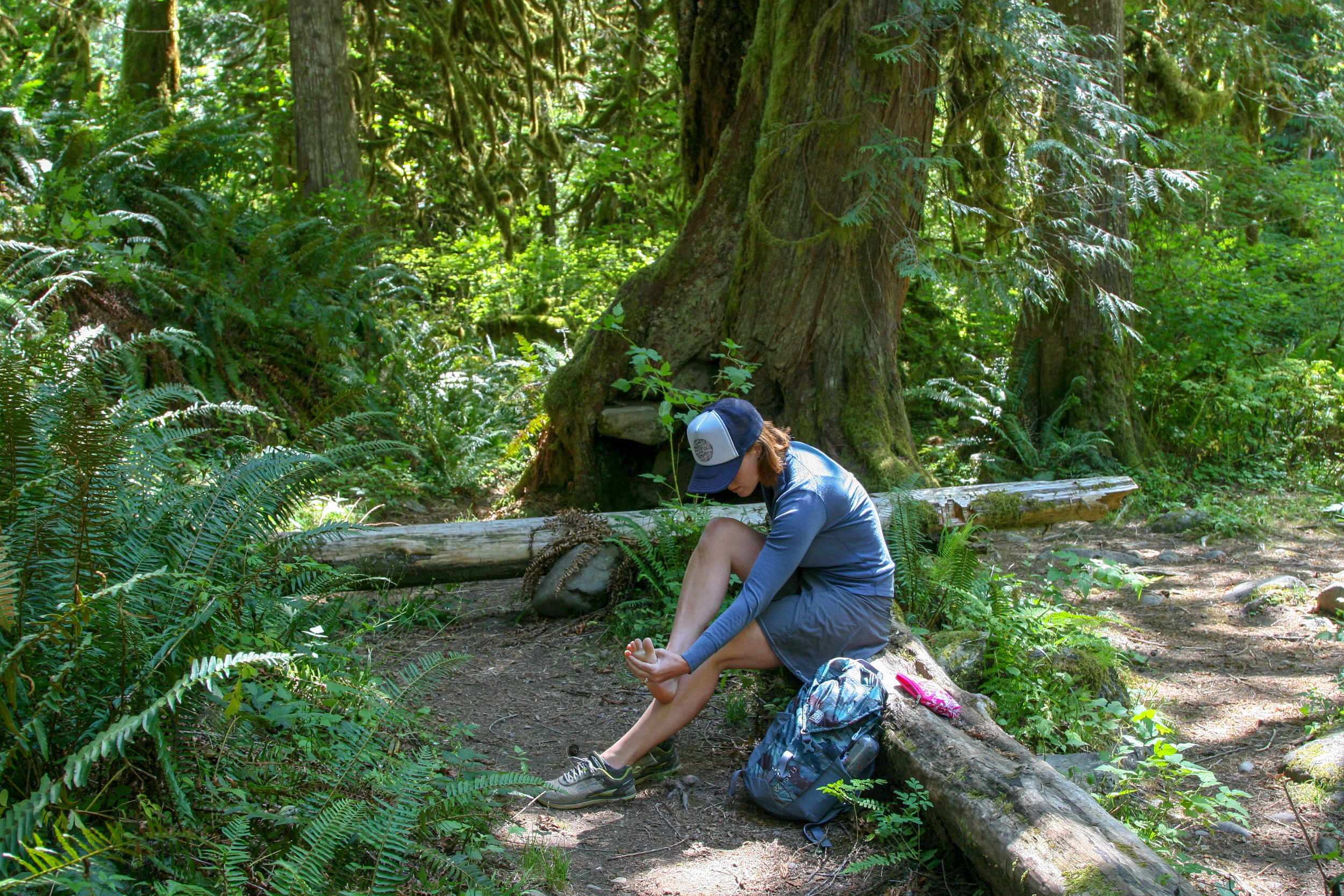
3. Waterproof is a Misleading Term
Most boots claim to be waterproof, and most hikers think that’s a good thing. But waterproof boots won’t keep your feet dry. It’s as simple as that. Your feet will be wet with sweat because they can’t breathe.
Waterproof boots only provide short-term protection from rain. When it rains, water will run down your legs and into your boots.
Even the highest quality waterproof boots will develop tiny holes over time that slowly let water in during prolonged rain.
Waterproof treatments are not permanent and will need to be refreshed after a while.
Gaiters and rain pants can help delay swamping your boots, but if it rains for long enough, inevitably, your feet will get wet. And when boots get wet, they get heavy. Very heavy. They also take forever to dry out. So don’t get sucked into the “waterproof” hype.
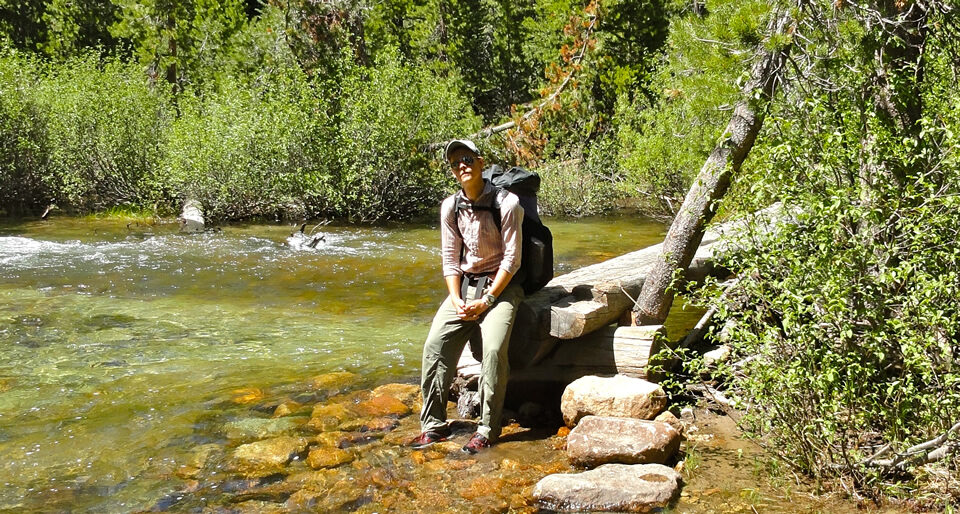
4. Ankle Support is a Myth
Okay, maybe myth isn’t the right word. But ankle support isn’t all it’s cracked up to be.
We all have it baked into our minds that boots provide ankle support, and that’s what’s going to keep us from getting injured. But there isn’t actually much evidence to back that up. Most research suggests that to prevent ankle injuries, it is essential to focus on strengthening and stretching the ankles.
If you’re a healthy, active person without nagging ankle issues, you likely don’t need extra ankle support while hiking.
Furthermore, boots will tire your legs more quickly and make your footwork clumsier. Both of which will put you at much greater risk of other injuries.
True story: We were recently contacted by a new boot company claiming that their boots offer better ankle support. They proudly stated, “out of XXX boots sold, we’ve only had nine customers report ankle injuries!” Moral of the story: even special new ankle support boots can’t entirely prevent injuries.
5. Boots are Demanding
Boots are expensive, they take a long time to break in, and they need to be maintained to keep their form. That’s a lot of hassle for a tool that’s going to give you blisters and waste your energy.
Wouldn’t a light, cost-effective alternative that you can wear straight out of the box be better?
Don’t get me wrong. We own a fantastic pair of boots (check out our lists of the best men’s and women’s hiking boots to see our top picks) that have lasted for many years. We use them for snowy winter hikes, and they’re an excellent tool. I just don’t wear boots on my 3-season backpacking trips, and I don’t think I ever will again.
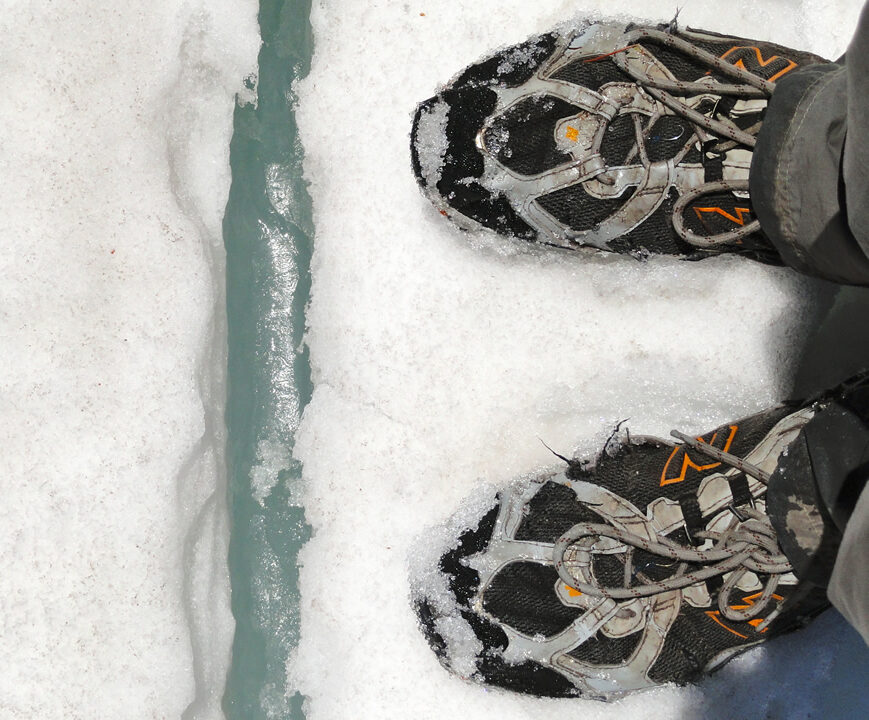
Make The Switch
When you’re ready to make the switch, we recommend choosing lightweight hiking shoes or trail running shoes. For more information, refer to our lists of the Best Hiking Shoes for Men and Women to see our top picks and learn more about critical considerations to keep in mind when choosing hiking footwear.
Look for a comfortable shoe that you can wear without any break-in period. Look for shoes with good traction and a soft, flexible sole that is thick enough to avoid feeling rocks under your feet.
Get shoes that will breathe easily and dry quickly after getting wet. Steer clear of shoes that have large sections of unsupported mesh, because mesh can wear out quickly on the trail.
It’s also a good idea to bump up half a shoe size, because feet tend to swell over long days of hiking. Running shoe soles will compress over time, but they are usually good for at least 500 trail miles, sometimes more.
CleverHiker founder, Dave Collins, wore this pair of New Balance running shoes for over 900 miles on the PCT. His last pair of trail runners (Saucony Peregrine) lasted over 1,000 trail miles.
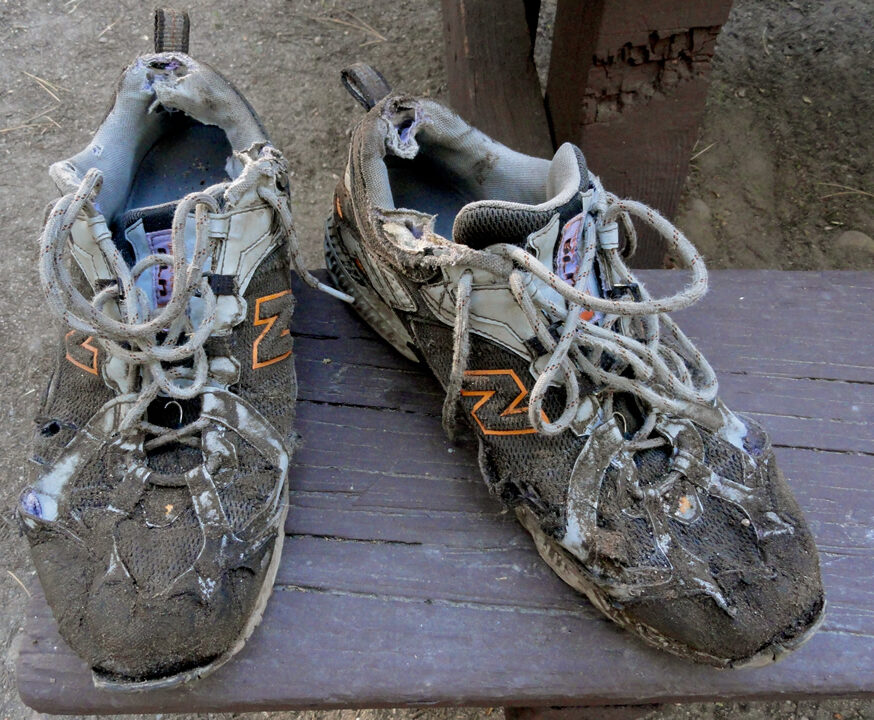
Top Running Shoe Recommendations
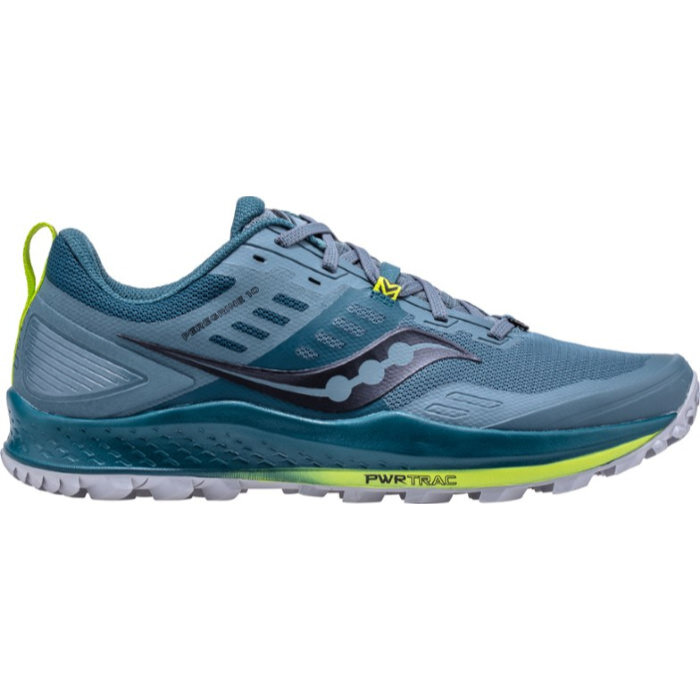
Saucony Peregrine
Dave Collins, CleverHiker founder, is currently rocking the Saucony Peregrines, and he loves them. They have comfortable padding, fantastic traction, and a sturdy sole.
Altra Lone Peak
Lightweight backpackers are all about Altra shoes for good reason. The Lone Peaks have excellent traction, comfortable padding, and significantly more room in the toebox than normal hiking shoes. These are some of the most popular thru-hiking shoes on the market.
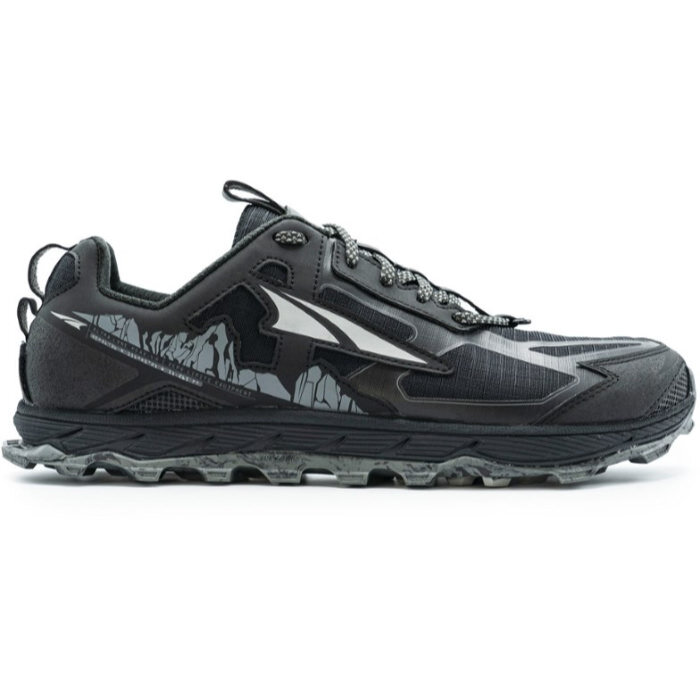
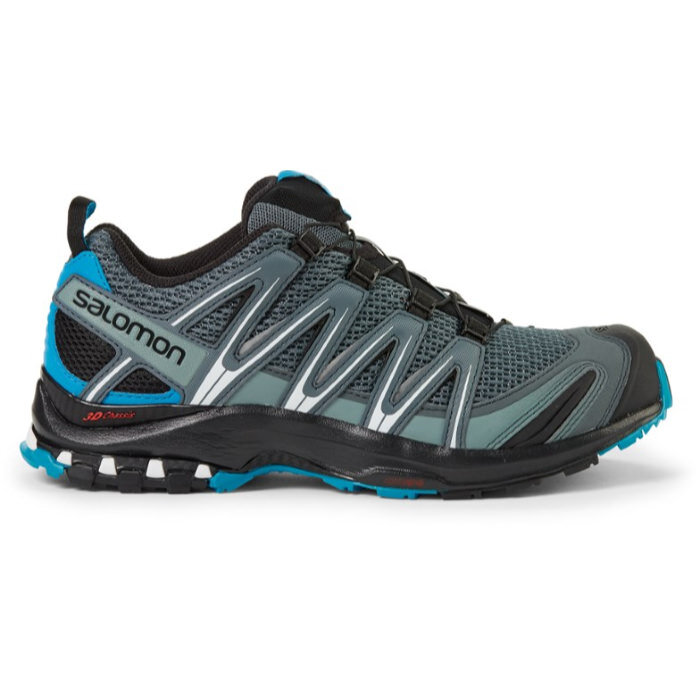
Salomon XA Pro 3D
If the support of a heavier hiking boot still sounds appealing to you, the Salomon XA Pros may be an easier transition than other trail runners. The XA Pros are supportive and burly for running shoes, but they’re comfy right out of the box and will save you a significant amount of weight versus hiking boots.
HOKA ONE ONE Speedgoat
The Speedgoats feel cushy and luxurious, especially when compared to stiff leather boots. HOKA’s signature cushy soles help absorb the impact from the ground and keep your muscles and joints happy all day long. These runners have been a go-to for thru-hikers for the past few years due to their comfort and excellent traction.
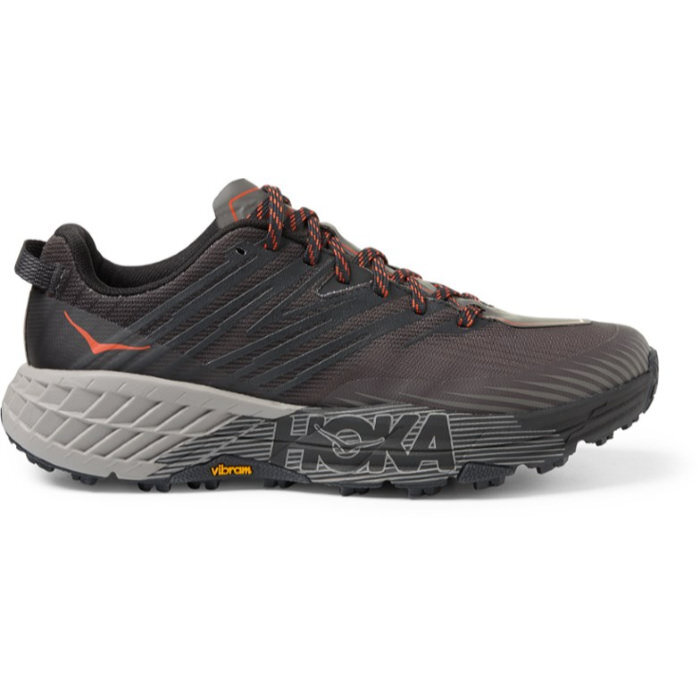
Whatever Fits Your Feet
We’ve used lots of different brands of trail running shoes in the past with few complaints. So we recommend going with whatever feels right to you. Remember to look for shoes that:
- Feel comfortable immediately
- Have good traction
- Have enough sole padding
- Breathe easily
- Will dry quickly
Also, remember to bump up a half size to account for swollen feet on long days of hiking. Check out our lists of the Best Hiking Shoes for Men and Women to see all of our top picks.
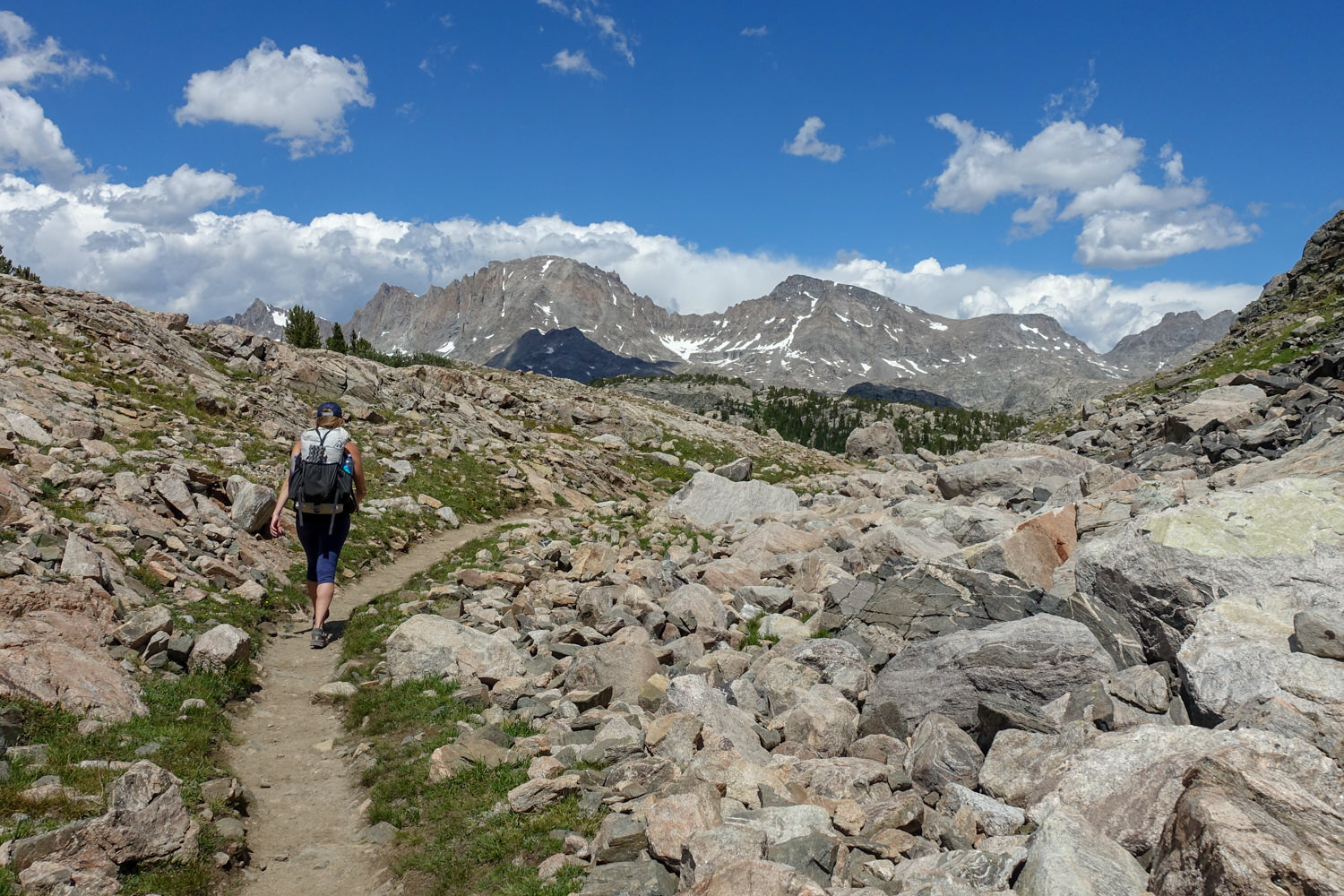
How Light Should You Pack
As far as how light your backpack should be before you can safely switch to running shoes, there’s really no magic number. It’s totally a personal preference thing.
For us, we’d still wear running shoes even if we carried a 40+ pound pack. The biggest negative impact of wearing lightweight shoes with a heavier load is that your shoes will wear out faster.
That said, hiking lighter has TONS of great benefits, starting with simply enjoying the wilderness more, so we recommend lightening your backpack no matter what footwear you plan on using. If you’re new to going light, we recommend reading through our Ultralight Backpacking Basics post for tips. Then, head over to our CleverHiker Gear Guide, which features all of our favorite equipment.
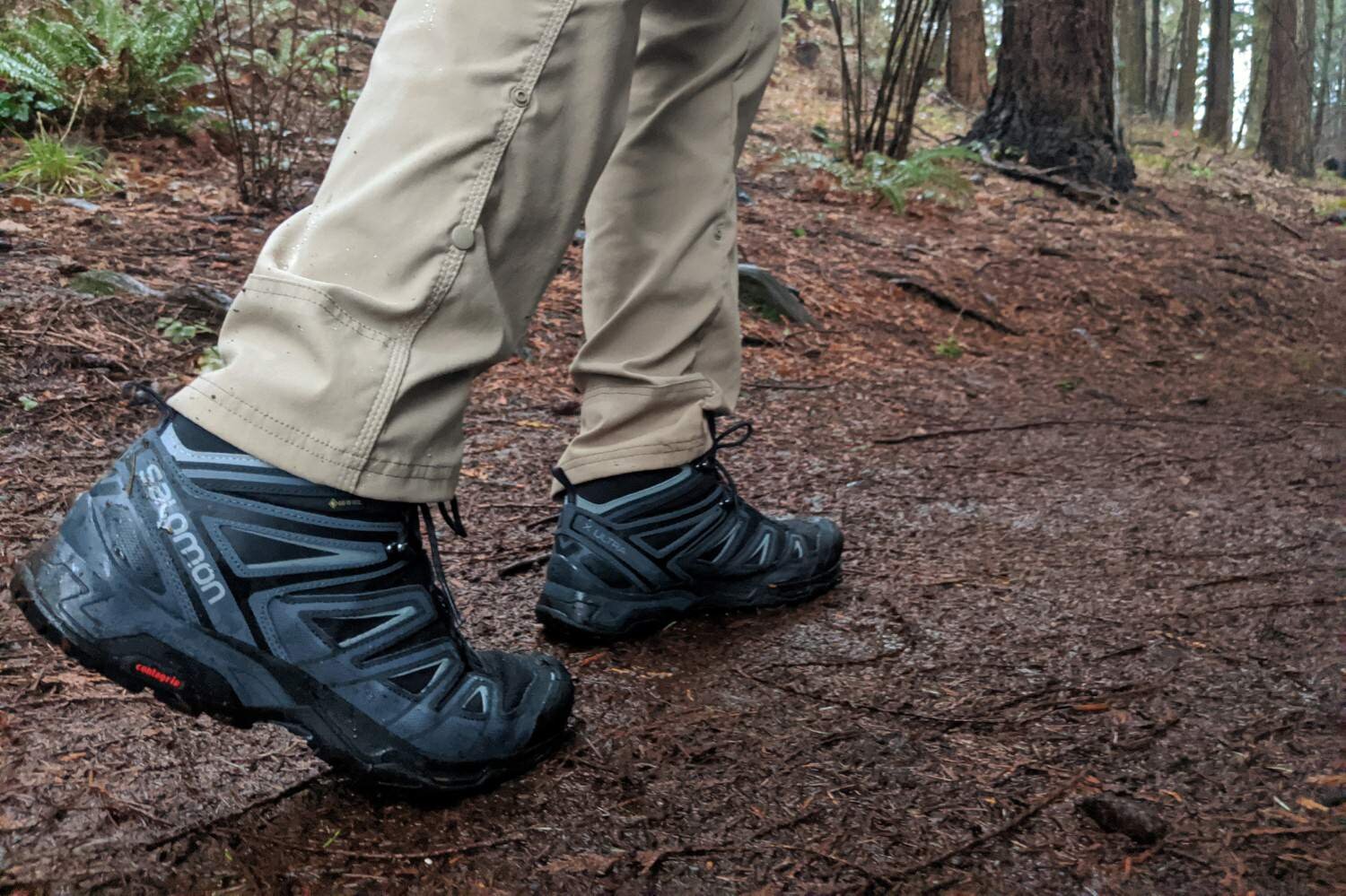
Boot Lovers
There are those out there who still swear by boots, and that’s totally fine. If you feel more comfortable in boots, do your thing. We put together our Best Hiking Boots for Men and Women lists just for you!
While we do use boots for occasional day hikes (especially in wet weather), we personally will probably never return to hiking boots for backpacking. Dave Collins, founder of CleverHiker, hiked the 2,650-mile PCT in trail runners and never once wished he had a pair of boots.
We’ve summited snowy mountains, forded icy rivers, crossed miles of snow-covered trail, navigated massive scree fields, and hiked for weeks in the rain. We did all those things in running shoes.
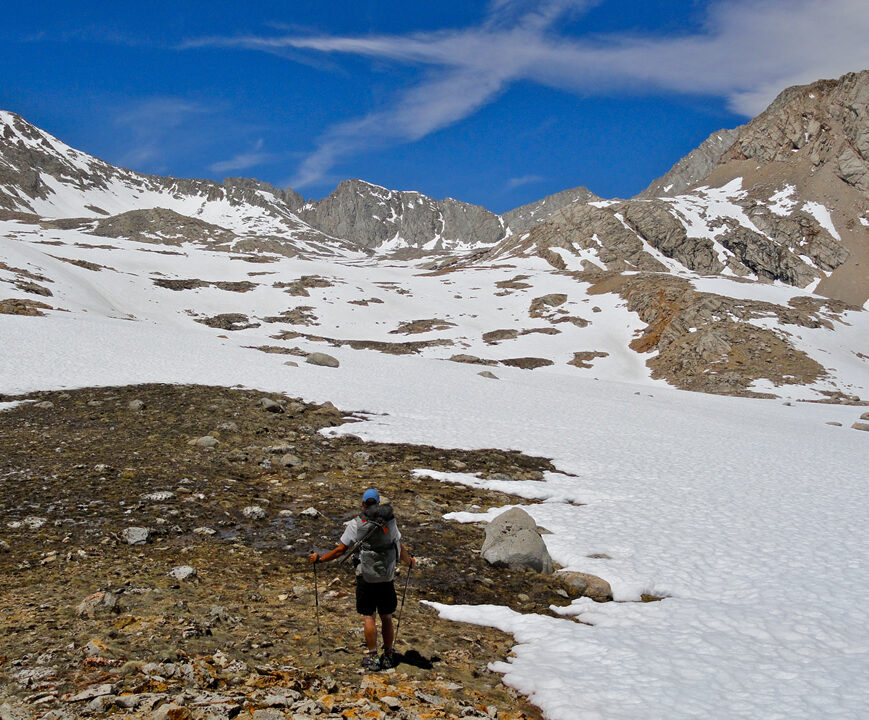
Still Skeptical?
Switching from boots to trail runners is a big change that many hikers worry about. So test it out, just like you would with any other modification to your backpacking routine.
Pack up a full bag and head out for a long day hike in your area. You might love running shoes immediately, or they might take some time to get used to, but in the end, your feet will definitely thank you for it.
Have you made the switch to running shoes? Did it work out? Do you have any good tips to share? Or maybe you’re a staunch supporter of boots? If so, leave a comment below. We’re always interested in hearing other opinions.
If you enjoyed this review, you’ll probably like our other gear lists as well. Here are some popular resources from the CleverHiker Gear Guide:
- 10 Best Hiking Socks
- 10 Best Backpacking Tents
- 10 Best Sleeping Bags & Quilts
- 10 Best Sleeping Pads
- 10 Best Lightweight Backpacks
- Best Stoves, Food, Water Filters, Jackets & More: CleverHiker Gear Guide


